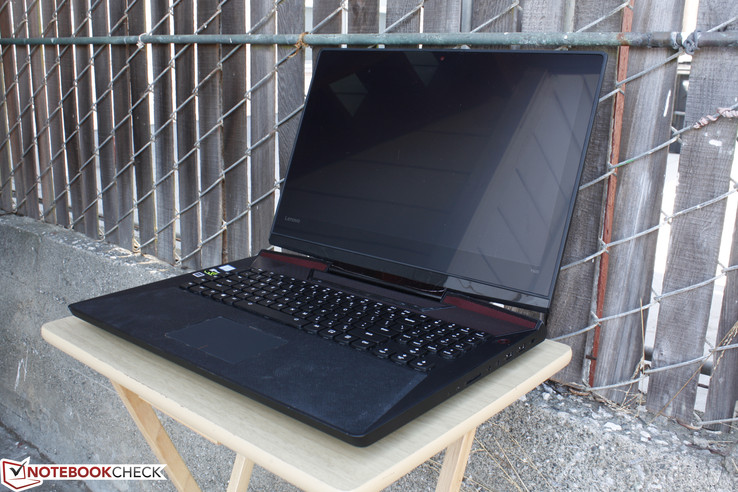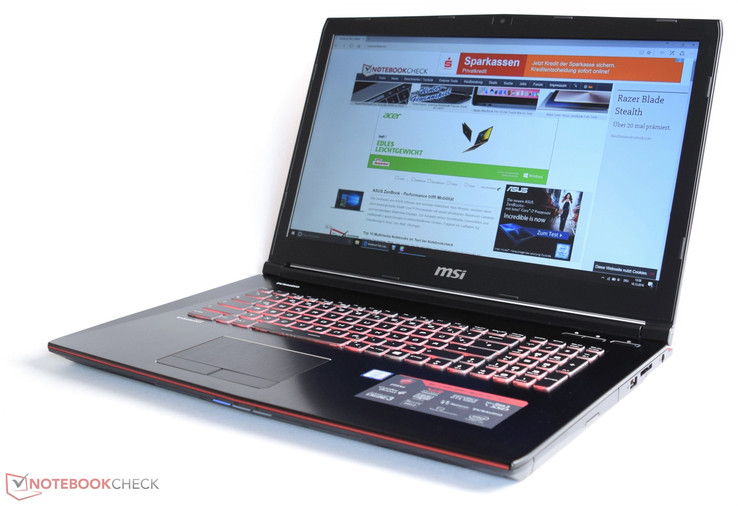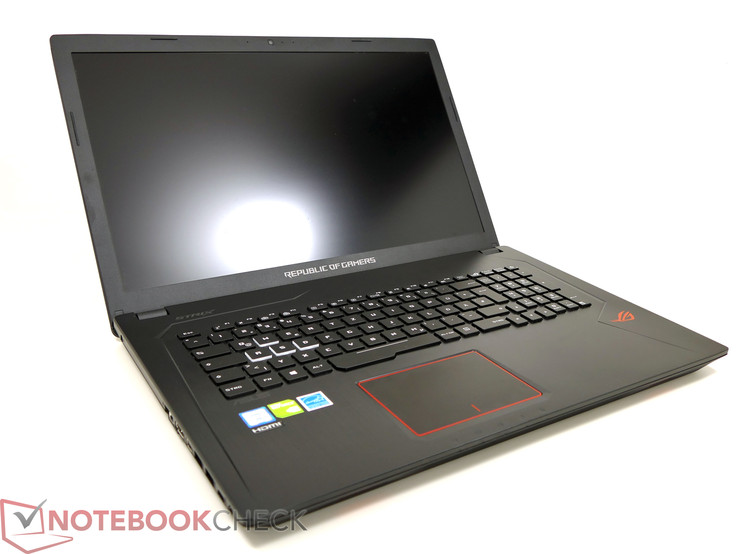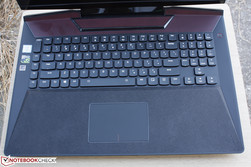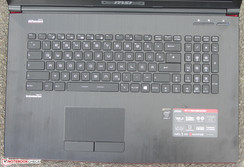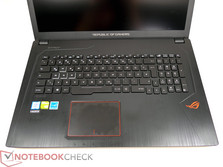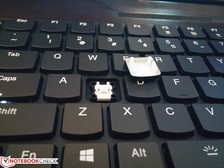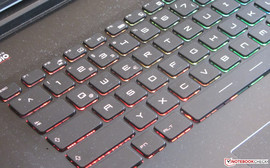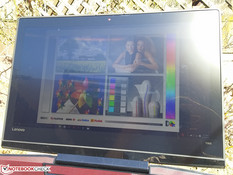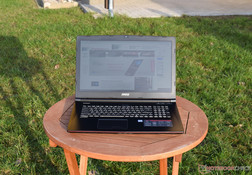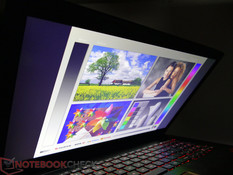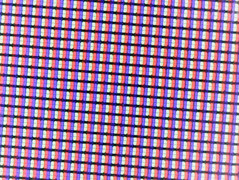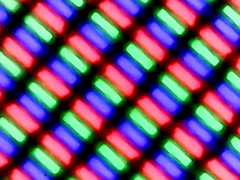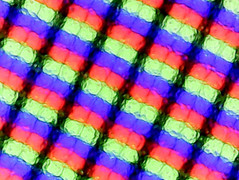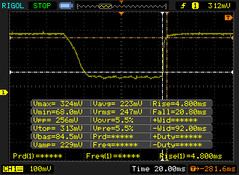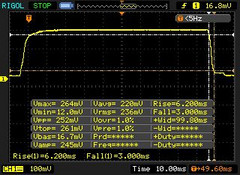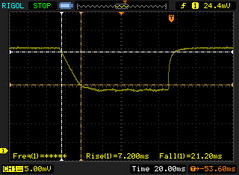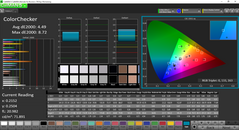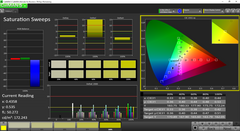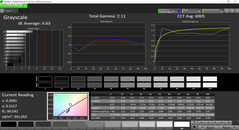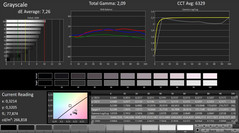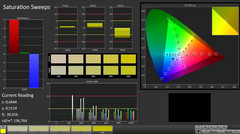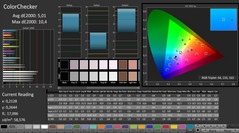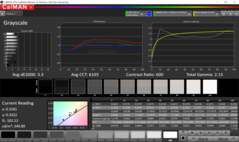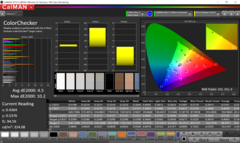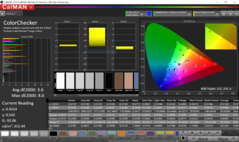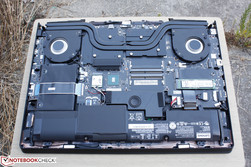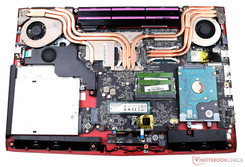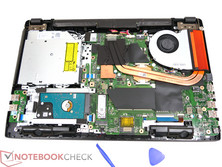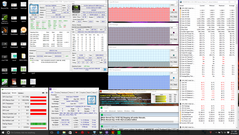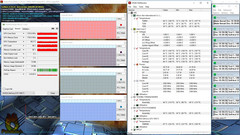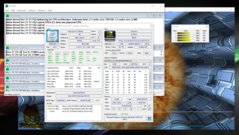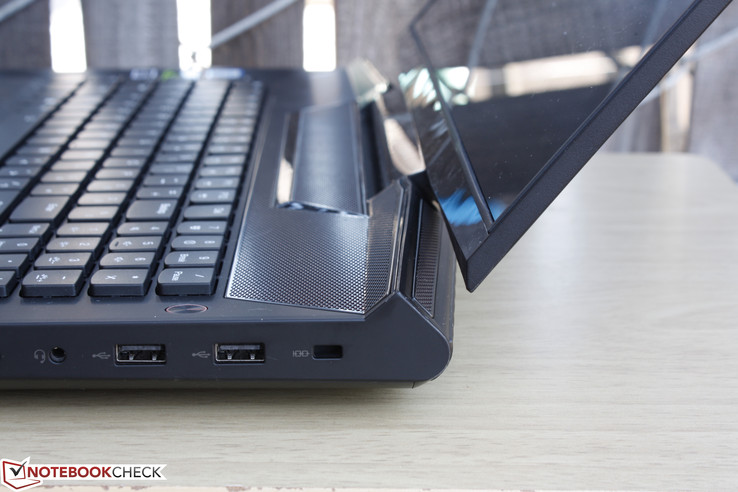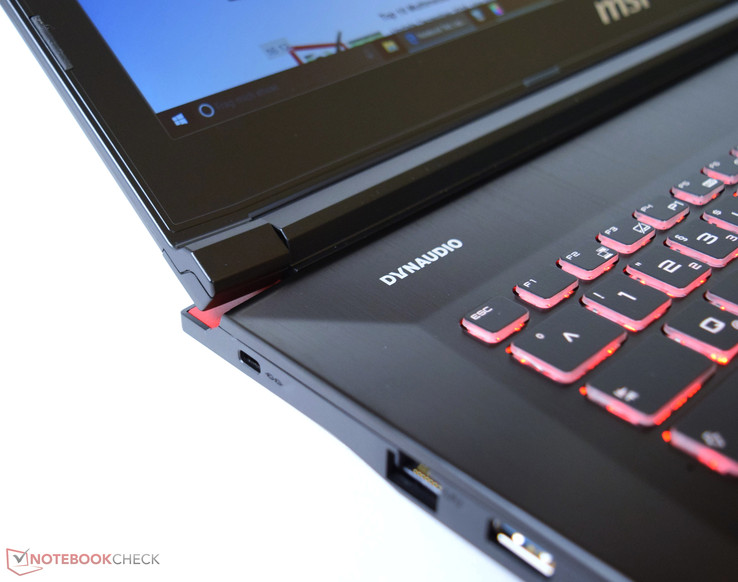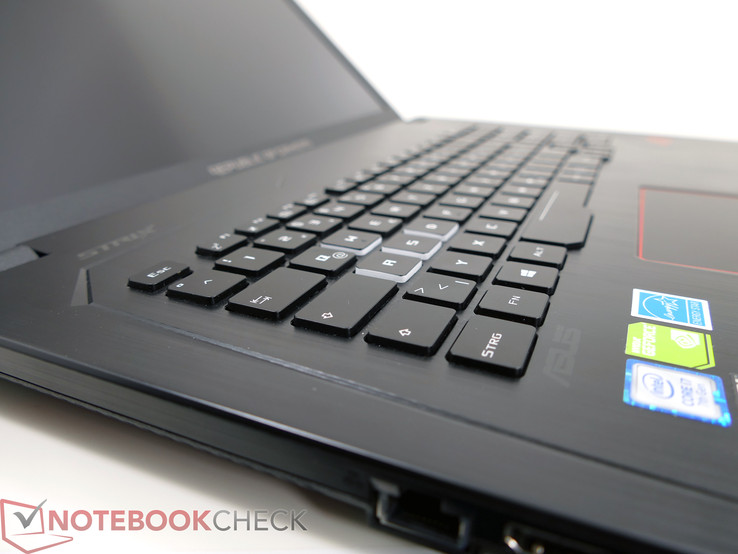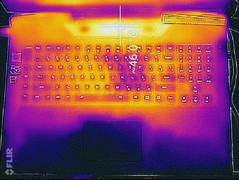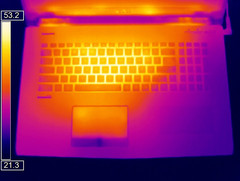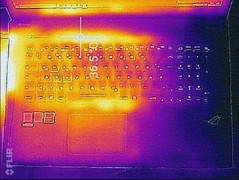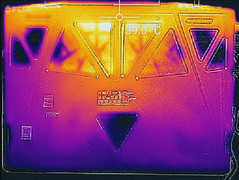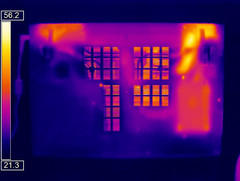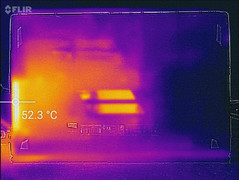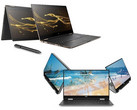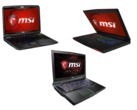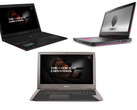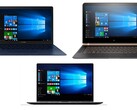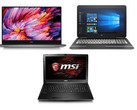Face Off: Lenovo Ideapad Y900 17ISK vs. MSI GE72 7RE vs. Asus ROG GL753VD

The Nvidia Pascal series has turned notebook gaming over its head as otherwise inconspicuous multimedia machines like the XPS and Pavilion systems are now wholly capable of 1080p gaming on respectable graphical settings and frame rates. For this Face Off, we'll be comparing Lenovo's highest-end Maxwell notebook - the Ideapad Y900 17ISK - to two lower-end Pascal gaming notebooks to show what performance gaps remain between the two GPU generations.
We encourage users to check out our dedicated review pages below for more data and detailed analyses of each of the three models. This comparison is by no means a replacement, but a condensed aid for those on the fence.
Case
The GE72 chassis is derived from the GT72 series that is still going strong after all these years. Its base is as rigid as the Y900 whilst utilizing fewer smaller pieces to reduce the chances of creaking and gaps. The GE72 lid, however, is comparatively more flexible and continues to be a major weak point on the aging design.
The GL753VD is largely plastic in contrast to the Lenovo and MSI. Nonetheless, its base feels solid while the aluminum-brushed outer lid suffers from similar flexing characteristics as the MSI. In this case, the Lenovo system is designed much more aggressively with sharper edges and corners than the boxier GT72 and grayer GL753VD.
Dimensions and weight are where the Y900 differentiates itself from the other two by significant margins. The Lenovo is much heavier than both the MSI and Asus by about 1.5 kg each while having a larger footprint and a more rigid design. Its mechanical keyboard and notably denser internal battery pack are partly to blame for the massive weight gains.
Connectivity
The Lenovo notebook comes out on top with its HDMI 2.0 port capable of 4K60 output, full-size DisplayPort, more internal storage bays, and the versatile Thunderbolt 3 that's still tough to find outside of high-end gaming systems or pricey Ultrabooks. Both the GE72 and GL753VD lack Thunderbolt 3 and are instead equipped with optical drives that are arguably becoming less important on notebooks. To MSI's credit, the GE72 optical drive is at least removable and replaceable.
| Lenovo IdeaPad Y900 | MSI GE72 7RE | Asus GL753VD | |
| USB | 2x USB 2.0, 2x USB 3.0, 1x USB Type-C + Thunderbolt 3 | 1x USB 2.0, 2x USB 3.0, 1x USB Type-C Gen. 2 | 1x USB 2.0, 3x USB 3.0, 1x USB Type-C Gen. 1 |
| Video-out | 1x HDMI 2.0, 1x DisplayPort | 1x HDMI 1.4, 1x mini-DisplayPort | 1x HDMI, 1x mini-DisplayPort |
| Audio | 3.5 mm headset, 3.5 mm microphone | 3.5 mm earphones, 3.5 mm microphone | 3.5 mm combo |
| Other | SD reader, Gigabit RJ-45, Kensington Lock | SD reader, Gigabit RJ-45, optical drive | SD reader, Gigabit RJ-45, optical drive, Kensington Lock |
| Storage Bays | 2x 2.5-inch SATA III + 2x M.2 2280 | 1x 2.5-inch SATA III + 1x M.2 2280 (+ ODD) | 1x 2.5-inch SATA III + 1x M.2 2280 |
| SD Card Reader | |
| average JPG Copy Test (av. of 3 runs) | |
| Asus Strix GL753VD-GC045T | |
| Lenovo IdeaPad Y900 | |
| MSI GE72 7RE-046 | |
| maximum AS SSD Seq Read Test (1GB) | |
| Lenovo IdeaPad Y900 | |
| Asus Strix GL753VD-GC045T | |
| MSI GE72 7RE-046 | |
Input Devices
The Ideapad Y900 is notable for its mechanical keyboard that - while not official Cherry keys - have firm feedback and are loud with easy to depress keys for rapid clicking. In practice, these keys are most comparable to the Cherry Red family of keyboards. This gives the Lenovo a unique edge over most gaming notebooks where standard Chiclet keys are common. The drawbacks are the clatter and wiggly keys, so typing emails and reports are made more difficult simply because the key feedback was designed specifically for gaming. In comparison, the Chiclet keys of the GE72 and GL753VD are softer, quieter, more familiar and easier to use for a wider range of tasks. We can't say objectively that the Lenovo system offers the overall better keyboard as its noisier "clicky" feel will be hit or miss for users.
Other features of the Lenovo include a column of dedicated Macro keys and a 7-zone RGB backlight whereas the MSI and Asus have 3-zone and 4-zone lighting areas, respectively.
In terms of their trackpads, the MSI system is without a doubt more comfortable due to its reliance on dedicated mouse keys. This allows the trackpad surface to be unyielding and completely firm. The brushed aluminum texture of the GE72 palm rests also apply to the trackpad and so its gliding properties are not absolutely smooth, but we don't find this to be distracting during use. In comparison, the Asus trackpad feels more like cheap plastic and will accumulate grease quite quickly.
Display
Each of these three notebooks may come with the same 1080p resolution display, but there are other important factors at play. First, the semi-glossy Y900 boasts good contrast levels and brightness, but its display response times are average. Similarly, the GL753VD also exhibits average response times, but its gamut and contrast levels are inferior to both of its competitors. The MSI is special in that it carries a 120 Hz/5 ms TN display with much faster response times and full sRGB coverage. This makes the MSI more fit for fast-paced gaming than either the Lenovo or Asus, although its backlight brightness and viewing angles are worse. For an indoor gaming notebook, however, these drawbacks on the MSI shouldn't be very concerning.
| Lenovo IdeaPad Y900 | MSI GE72 7RE | Asus GL753VD | |
| Native Resolution | 1920 x 1080 IPS semi-glossy | 1920 x 1080 TN 120 Hz matte | 1920 x 1080 IPS matte |
| Pixel Density | 127 PPI | 127 PPI | 127 PPI |
| Panel ID | Philips LP173WF4-SPF1 | N173HHE-G32 (CMN1747) | LG Philips LP173WF4-SPF3 |
| Lenovo IdeaPad Y900 | MSI GE72 7RE-046 | Asus Strix GL753VD-GC045T | |
|---|---|---|---|
| Display | |||
| Display P3 Coverage (%) | 67.4 | 90.7 | 67.1 |
| sRGB Coverage (%) | 86.3 | 99.9 | 84.8 |
| AdobeRGB 1998 Coverage (%) | 63.2 | 85.2 | 62 |
| Response Times | |||
| Response Time Grey 50% / Grey 80% * (ms) | 34.8 ? | 27 ? | 33.2 ? |
| Response Time Black / White * (ms) | 25.6 ? | 9 ? | 28.8 ? |
| PWM Frequency (Hz) | |||
| Screen | |||
| Brightness middle (cd/m²) | 344.9 | 253 | 349 |
| Brightness (cd/m²) | 329 | 230 | 337 |
| Brightness Distribution (%) | 86 | 86 | 91 |
| Black Level * (cd/m²) | 0.349 | 0.24 | 0.58 |
| Contrast (:1) | 988 | 1054 | 602 |
| Colorchecker dE 2000 * | 4.49 | 5.01 | 4.5 |
| Colorchecker dE 2000 max. * | 8.72 | 10.4 | 10.2 |
| Greyscale dE 2000 * | 4.63 | 7.26 | 3.3 |
| Gamma | 2.11 104% | 2.09 105% | 2.15 102% |
| CCT | 6905 94% | 6329 103% | 6103 107% |
| Color Space (Percent of AdobeRGB 1998) (%) | 56.7 | 76 | 55.7 |
| Color Space (Percent of sRGB) (%) | 86.4 | 100 | 75.7 |
| Total Average (Program / Settings) |
* ... smaller is better
Performance
CPU Performance
The HK class of CPUs may be ranked more highly than the HQ class, but performance differences between the Skylake i7-6820HK and i7-7700HQ are mere single-digit percentages from one another according to CineBench benchmarks. For gaming purposes, either of these processors are more than sufficient since the performance deltas between the GPUs are significantly greater and more overriding.
See our dedicated CPU pages on the Core i7-6820HK and i7-7700HQ for more benchmarks and comparisons.
| Lenovo IdeaPad Y900 | MSI GE72 7RE | Asus GL753VD | |
| CPU | 2.7 GHz Core i7-6820HK | 2.8 GHz Core i7-7700HQ | 2.8 GHz Core i7-7700HQ |
| CPU TDP | 45 W | 45 W | 45 W |
| GPU | GeForce GTX 980M | GeForce GTX 1050 Ti | GeForce GTX 1050 |
| RAM | 16 GB DDR4, Dual-Channel, 4x SODIMM | 16 GB DDR4, Dual-Channel, 2x SODIMM | 16 GB DDR4, Dual-Channel, 2x SODIMM |
| Cinebench R15 | |
| CPU Single 64Bit (sort by value) | |
| Lenovo IdeaPad Y900 | |
| MSI GE72 7RE-046 | |
| Asus Strix GL753VD-GC045T | |
| CPU Multi 64Bit (sort by value) | |
| Lenovo IdeaPad Y900 | |
| MSI GE72 7RE-046 | |
| Asus Strix GL753VD-GC045T | |
| Cinebench R11.5 | |
| CPU Single 64Bit (sort by value) | |
| Lenovo IdeaPad Y900 | |
| MSI GE72 7RE-046 | |
| Asus Strix GL753VD-GC045T | |
| CPU Multi 64Bit (sort by value) | |
| Lenovo IdeaPad Y900 | |
| MSI GE72 7RE-046 | |
| Asus Strix GL753VD-GC045T | |
| Cinebench R10 | |
| Rendering Single CPUs 64Bit (sort by value) | |
| Asus Strix GL753VD-GC045T | |
| Rendering Multiple CPUs 64Bit (sort by value) | |
| Asus Strix GL753VD-GC045T | |
| wPrime 2.10 | |
| 1024m (sort by value) | |
| Lenovo IdeaPad Y900 | |
| 32m (sort by value) | |
| Lenovo IdeaPad Y900 | |
| Super Pi Mod 1.5 XS 32M - 32M (sort by value) | |
| Lenovo IdeaPad Y900 | |
| Asus Strix GL753VD-GC045T | |
| 3DMark | |
| 1280x720 offscreen Ice Storm Unlimited Physics (sort by value) | |
| Lenovo IdeaPad Y900 | |
| Asus Strix GL753VD-GC045T | |
| 1920x1080 Ice Storm Extreme Physics (sort by value) | |
| Lenovo IdeaPad Y900 | |
| 1280x720 Cloud Gate Standard Physics (sort by value) | |
| Lenovo IdeaPad Y900 | |
| MSI GE72 7RE-046 | |
| Asus Strix GL753VD-GC045T | |
| 1920x1080 Fire Strike Physics (sort by value) | |
| Lenovo IdeaPad Y900 | |
| MSI GE72 7RE-046 | |
| Asus Strix GL753VD-GC045T | |
| Asus Strix GL753VD-GC045T | |
| Fire Strike Extreme Physics (sort by value) | |
| Lenovo IdeaPad Y900 | |
| Asus Strix GL753VD-GC045T | |
| Asus Strix GL753VD-GC045T | |
| PCMark 7 | |
| Score (sort by value) | |
| MSI GE72 7RE-046 | |
| Lightweight (sort by value) | |
| MSI GE72 7RE-046 | |
| Productivity (sort by value) | |
| MSI GE72 7RE-046 | |
| Entertainment (sort by value) | |
| MSI GE72 7RE-046 | |
| Creativity (sort by value) | |
| MSI GE72 7RE-046 | |
| Computation (sort by value) | |
| MSI GE72 7RE-046 | |
| System Storage (sort by value) | |
| MSI GE72 7RE-046 | |
| PCMark 8 | |
| Work Score Accelerated v2 (sort by value) | |
| Lenovo IdeaPad Y900 | |
| Creative Score Accelerated v2 (sort by value) | |
| Lenovo IdeaPad Y900 | |
| Home Score Accelerated v2 (sort by value) | |
| Lenovo IdeaPad Y900 | |
| Asus Strix GL753VD-GC045T | |
| X264 HD Benchmark 4.0 | |
| Pass 1 (sort by value) | |
| Lenovo IdeaPad Y900 | |
| Asus Strix GL753VD-GC045T | |
| Pass 2 (sort by value) | |
| Lenovo IdeaPad Y900 | |
| Asus Strix GL753VD-GC045T | |
* ... smaller is better
GPU Performance
The GTX 980M outperforms the GTX 1050 and 1050 Ti by about 25 percent and 70 percent, respectively, according to 3DMark Fire Strike. The fact that a mainstream Pascal GPU can come so close in raw performance to a high-end Maxwell GPU is impressive. Rise of the Tomb Raider on 1080p High settings averages about 30 FPS on the Asus with a 10 FPS rise on the GE72 and another 10 FPS rise on the Lenovo.
See our GTX 980M, GTX 1050, and GTX 1050 Ti GPU pages for more technical information and benchmark comparisons.
| 3DMark 11 | |
| 1280x720 Performance GPU | |
| Lenovo IdeaPad Y900 | |
| MSI GE72 7RE-046 | |
| Asus Strix GL753VD-GC045T | |
| 1280x720 Performance Physics | |
| Lenovo IdeaPad Y900 | |
| Asus Strix GL753VD-GC045T | |
| MSI GE72 7RE-046 | |
| 1280x720 Performance Combined | |
| Lenovo IdeaPad Y900 | |
| MSI GE72 7RE-046 | |
| Asus Strix GL753VD-GC045T | |
| Cinebench R15 - OpenGL 64Bit | |
| Asus Strix GL753VD-GC045T | |
| Lenovo IdeaPad Y900 | |
| MSI GE72 7RE-046 | |
| 3DMark | |
| Fire Strike Extreme Combined | |
| Lenovo IdeaPad Y900 | |
| Asus Strix GL753VD-GC045T | |
| Asus Strix GL753VD-GC045T | |
| Fire Strike Extreme Physics | |
| Lenovo IdeaPad Y900 | |
| Asus Strix GL753VD-GC045T | |
| Asus Strix GL753VD-GC045T | |
| Fire Strike Extreme Graphics | |
| Lenovo IdeaPad Y900 | |
| Asus Strix GL753VD-GC045T | |
| Asus Strix GL753VD-GC045T | |
| Fire Strike Extreme Score | |
| Lenovo IdeaPad Y900 | |
| Asus Strix GL753VD-GC045T | |
| Asus Strix GL753VD-GC045T | |
| 1920x1080 Fire Strike Combined | |
| Lenovo IdeaPad Y900 | |
| MSI GE72 7RE-046 | |
| Asus Strix GL753VD-GC045T | |
| Asus Strix GL753VD-GC045T | |
| 1920x1080 Fire Strike Physics | |
| Lenovo IdeaPad Y900 | |
| Asus Strix GL753VD-GC045T | |
| Asus Strix GL753VD-GC045T | |
| MSI GE72 7RE-046 | |
| 1920x1080 Fire Strike Graphics | |
| Lenovo IdeaPad Y900 | |
| MSI GE72 7RE-046 | |
| Asus Strix GL753VD-GC045T | |
| Asus Strix GL753VD-GC045T | |
| 1920x1080 Fire Strike Score | |
| Lenovo IdeaPad Y900 | |
| MSI GE72 7RE-046 | |
| Asus Strix GL753VD-GC045T | |
| Asus Strix GL753VD-GC045T | |
| Rise of the Tomb Raider - 1920x1080 Very High Preset AA:FX AF:16x (sort by value) | |
| Lenovo IdeaPad Y900 | |
| MSI GE72 7RE-046 | |
| Asus Strix GL753VD-GC045T | |
Stress Test
We run both Prime95 and FurMark to simulate maximum stress and to test system stability. These unrealistic conditions do not represent daily workloads and are instead meant to put both the CPU and GPU at 100 percent capacity.
The Lenovo system runs the warmest by far with CPU and GPU temperatures in the upper 90 C and 80 C ranges, respectively. This is compared to the mid 60 C to mid 80 C ranges on both the MSI and Asus when under similar extreme loads. The MSI is even able to operate at higher core clock rates than the Lenovo while running significantly cooler, so its hefty cooling system and larger number of heat pipes are put to good use.
Lenovo may have went overboard with the overclockable i7-6820HK as a standard i7-6700HQ would have been more than enough judging by the temperatures when under stress. Nonetheless, it's worth noting that none of these notebooks will throttle their respective CPUs even when under extreme conditions as expected from any high-end gaming system.
| Lenovo IdeaPad Y900 | MSI GE72 7RE | Asus GL753VD | |
| Processor | Core i7-6820HK | Core i7-7700HQ | Core i7-7700HQ |
| Rated GPU Core Clock (MHz) | 1038 | 1493 | 1354 |
| Stable GPU Core Clock on FurMark (MHz) | 911 | 1316 | 620 |
| Rated CPU Core Clock (GHz) | 2.7 | 2.8 | 2.8 |
| Stable CPU Core Clock on Prime95 (GHz) | 3.0 - 3.2 | 3.4 | 2.9 - 3.0 |
| Average CPU temperature | 96 C | 86 C | 85 C |
| Average GPU temperature | 80 C | 66 C | 71 C |
Emissions and Energy
System Noise and Temperature
The fans are always active on each of these three notebooks even when simply idling on desktop. They will periodically pulse to higher RPMs before dropping back down again, which is undesirable if just checking email or during low use. This phenomenon is most noticeable on the Lenovo as our test unit would jump up from a quiet 29 dB(A) all the way up to 48 dB(A) seemingly at random in what is likely a software bug on early units. When gaming, however, fan noise between the systems stabilize in the narrow 47 to 49 dB(A) range. We were definitely expecting both the Asus and MSI to run quieter than the Lenovo since they are more power efficient gaming systems, but this is unfortunately not the case.
Surface temperatures when under extreme loads are unfavorable on the three systems as the main keyboard keys warm up significantly as shown by our temperature maps below. The palm rests and NumPad remain relatively cool in comparison to the QWERTY keys no matter the system load. Though not uncomfortable by any means, expect warm fingers when hovering around the WASD keys during gameplay.
| Lenovo IdeaPad Y900 | MSI GE72 7RE-046 | Asus Strix GL753VD-GC045T | |
|---|---|---|---|
| Noise | |||
| off / environment * (dB) | 28.8 | 30 | 28.8 |
| Idle Minimum * (dB) | 29.4 | 34 | 33.9 |
| Idle Average * (dB) | 32.4 | 35 | 33.9 |
| Idle Maximum * (dB) | 48 | 36 | 37.8 |
| Load Average * (dB) | 42.5 | 41 | 42.7 |
| Load Maximum * (dB) | 48.5 | 49 | 47.4 |
* ... smaller is better
Power Consumption
The GTX 980M is a ~125 W TDP chip while GTX 1050 and 1050 Ti are about 75 W each. When under gaming or extreme loads, the IdeaPad Y900 demands about 40 W and 50 W more than the MSI and Asus, respectively. The Lenovo is especially more demanding when idling with a measured draw of almost 30 W compared to half or less on the Asus.
| Lenovo IdeaPad Y900 | MSI GE72 7RE-046 | Asus Strix GL753VD-GC045T | |
|---|---|---|---|
| Power Consumption | |||
| Idle Minimum * (Watt) | 24.3 | 14 | 6.2 |
| Idle Average * (Watt) | 29.6 | 20 | 12.2 |
| Idle Maximum * (Watt) | 29.9 | 25 | 14.8 |
| Load Average * (Watt) | 110.1 | 82 | 84.9 |
| Load Maximum * (Watt) | 171.4 | 135 | 120.7 |
* ... smaller is better
Battery Life
The Lenovo notebook carries the significantly larger battery capacity at 90 Wh compared to 51 Wh and 48 Wh on the MSI and Asus, respectively. Nonetheless, this is unable to offset the lack of Optimus and the more power-hungry GPU of the Lenovo and so runtimes are still slightly longer on the Asus. Users can expect about 4 to 4.5 hours of real-world WLAN use from the Lenovo and Asus and about 3 hours from the MSI. This is about average if not slightly lower as far as large gaming notebooks go.
The battery modules are all integrated on each of these three systems.
| Lenovo IdeaPad Y900 90 Wh | MSI GE72 7RE-046 51 Wh | Asus Strix GL753VD-GC045T 48 Wh | |
|---|---|---|---|
| Battery runtime | |||
| Reader / Idle (h) | 5.8 | 8.6 | |
| WiFi v1.3 (h) | 4.1 | 3.1 | 4.4 |
| Load (h) | 2.3 | 0.8 | |
| H.264 (h) | 3.3 |
Verdict
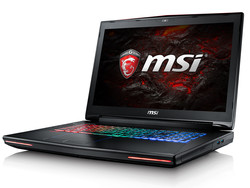
The Lenovo Y900 retailed for about $500 to $1000 USD more than the current mid-range GE72 or GL753VD when it launched in mid 2016. It is, after all, an enthusiast-level gaming notebook with more features and expandability than the MSI or Asus.
While the GE72 and GL753VD can't quite catch up to some of the hardware features of the Lenovo, the GTX 980M is showing its age in regard to efficiency. It still handily outperforms both the GTX 1050 and 1050 Ti by about 70 percent and 25 percent, respectively, but it will consume about 25 to 35 percent more power to accomplish this and will run significantly warmer all the while.
Lenovo has since updated its Y900 to the Y910 with GTX 1070 options. It's difficult to justify purchasing an older high-end Maxwell gaming machine when systems with the GTX 1050 Ti or GTX 1060 can come very close in performance on tighter power and temperature budgets.
| Lenovo IdeaPad Y900 17ISK | MSI GE72 7RE | Asus ROG Strix GL753VD |
|---|---|---|
+ Denser body; stronger lid; more aggressive design + Thunderbolt 3, 4x storage bays, 4x SODIMM + Mechanical keyboard with 7-zone RGB backlight | + Dedicated mouse keys + Quieter keyboard keys + 120 Hz/ 5 ms display; Full sRGB coverage + Cooler CPU and GPU temperatures + Higher stable CPU clock rates | + Lighter and smaller footprint + Quieter keyboard keys + Longer battery life despite having the smallest battery capacity |
- Thicker chassis; larger footprint; significantly heavier - no optical drive - Semi-glossy display - Extreme CPU temperatures with no tangible performance advantages - Pulsing system fans during very low loads | - More flexible lid - Very slow SD reader - Dimmer display backlight - 120 Hz/5 ms panel limited to TN - Shorter battery life | - More flexible lid - Narrower color gamut; weaker contrast levels |
Lenovo Ideapad Y900 17ISK
Price comparison
MSI GE72 7RE
Price comparison
Asus ROG Srix GL753VD
Price comparison
See more quick comparisons in our Face Off series:
- Dell XPS 15 vs. Apple MacBook Pro 15 vs. Asus ZenBook Pro UX501
- Aorus X3 Plus vs. Gigabyte P34W vs. Razer Blade 14
- Dell XPS 13 vs. Apple MacBook Pro 13 vs. Asus ZenBook UX305
- HP EliteBook 820 G2 vs. Lenovo ThinkPad X250 vs. Dell Latitude 12 E7250
- Asus ROG G751 vs. Dell Alienware 17 vs. MSI GT72 Dominator
- Lenovo ThinkPad T450 vs. Acer TravelMate P645 vs. Dell Latitude 14 E5450
- Dell Alienware 15 vs. Clevo P751ZM vs. MSI GE62
- Acer Aspire V17 Nitro vs. Asus N751 vs. HP Envy 17
- Samsung Galaxy Tab S 8.4 vs. Sony Xperia Z3 Compact vs. Dell Venue 8 7000
- Asus EeeBook X205TA vs. Lenovo S20 vs. Acer Aspire ES1
- Microsoft Surface Pro 3 vs. Asus Transformer Book T300 Chi vs. Toshiba Portege Z20t
- Lenovo ThinkPad Edge E550 vs. Acer Aspire E5 vs. HP ProBook 450 G2
- HP Pavilion 15 vs. Lenovo IdeaPad Z50 vs. Toshiba Satellite S50
- Apple MacBook Air 13 2015 vs. Samsung ATIV Book 9 900X3G vs. Asus ZenBook UX303
- Asus ROG G501 vs. Lenovo Y50 vs. Acer Aspire V15 Nitro
- OnePlus 2 vs. Honor 6 Plus vs. Motorola Moto X Play
- Lenovo Yoga 500 vs. Dell Inspiron 15 7000 vs. Toshiba Satellite Radius 15
- Apple iPhone 6S Plus vs. Huawei Mate S vs. LG G4
- Dell Inspiron 15 5558 vs. Lenovo Z51 vs. Acer Aspire V3 574G
- MSI GT72S vs. Asus G752 vs. Clevo P870DM
- Microsoft Surface Book vs. Dell XPS 13 InfinityEdge vs. Apple MacBook Pro Retina 13
- Microsoft Surface Pro 4 Core i7 vs. Surface Pro 4 Core i5 vs. Surface Pro 4 Core m3
- Lenovo Yoga 900 vs. HP Spectre x360 13 vs. Dell Inspiron 13 7348
- Lenovo ThinkPad T450s vs. HP EliteBook Folio 1040 G2 vs. Dell Latitude 14 E7450
- Asus GL552JX vs. Acer Aspire V15 Nitro VN7 vs. MSI GP62 2QE
- MSI WT72 vs. Lenovo ThinkPad P70 vs. HP ZBook 17 G2
- Microsoft Surface Pro 4 vs. HP Spectre x2 12 vs. Fujitsu Stylistic Q665
- Dell XPS 13 9350 vs. XPS 13 9343 vs. XPS 13 9333
- Lenovo Ideapad Y700 15ISK vs. Gigabyte P55W v5 vs. Dell XPS 15 9550
- Lenovo ThinkPad X260 vs. Dell XPS 12 9250 vs. Razer Blade Stealth
- Lenovo ThinkPad X1 Carbon vs. HP EliteBook Folio 1040 G3 vs. Dell Latitude 14 E7470
- Aorus X5S v5 vs. MSI GS60 6QE vs. Acer Predator 15
- Lenovo ThinkPad 13 vs. Acer Aspire S 13 vs. HP Spectre 13
- Toshiba Tecra Z40 vs. Acer TravelMate P648 vs. HP EliteBook 840 G3
- Apple MacBook 12 Core m3, Core m5, and Core m7
- Lenovo Yoga 3 Pro 13 vs. Asus Zenbook UX360CA vs. Dell Inspiron 13
- MSI GT73VR vs. Asus G752VS vs. Alienware 17 R3
- Microsoft Surface Pro 4 vs. Acer Aspire Switch Alpha 12 vs. HP Elite x2 1012 G1 vs. HP Spectre x2 12 vs. Huawei MateBook
- Lenovo ThinkPad T460s vs. ThinkPad X1 Yoga vs. ThinkPad Yoga 460
- Asus X302UV vs. HP Envy 13 vs. Lenovo IdeaPad 710S
- Toshiba Portege Z30 vs. Dell Latitude 13 7370 vs. HP EliteBook 1030 G1
- HP Omen 17 vs. Aorus X7 DT v6 vs. EVGA SC17
- Xiaomi Mi Air vs. Dell XPS 13 9360 vs. Apple MacBook Pro 13 2016
- Razer Blade vs. Asus GL502VM vs. MSI GT72VR 6RD
- Lenovo Yoga Book vs. Acer Aspire Switch vs. HP x2 210 G1


